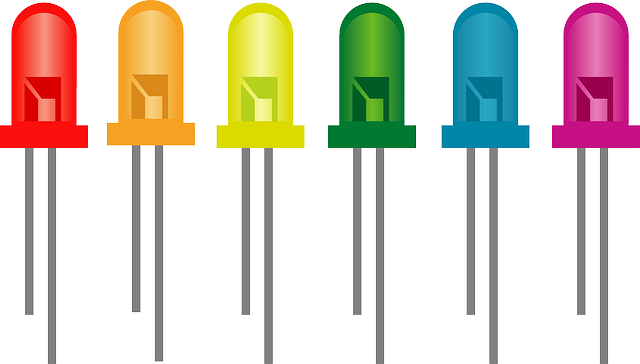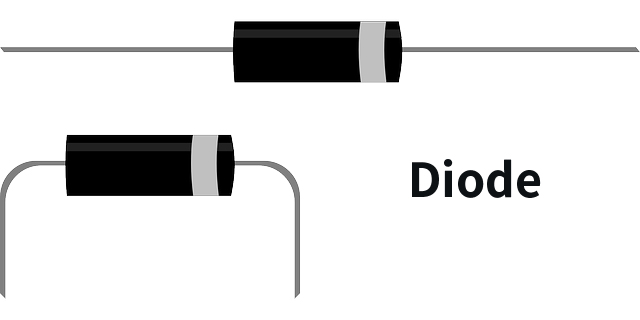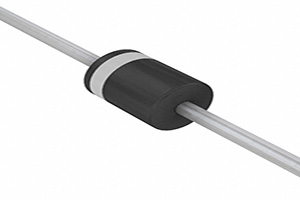How Does a Diode Work?
A diode is a two-terminal semiconductor electronic component that exhibits the property of rectification, allowing current to flow in one direction while blocking it in the opposite direction. It is a fundamental building block of modern electronic circuits and plays a crucial role in a wide range of applications.
CATALOG
| what is a diode? |
| The application of a diode |
| The Diode knowledge |
| How a diode works |
The most common type of diode is the PN junction diode, which is created by joining P-type (positively charged) and N-type (negatively charged) semiconductor materials together. The region where these materials meet is called the "PN junction," which forms the heart of the diode.
When a positive voltage is applied to the P-type region and a negative voltage is applied to the N-type region, the diode is said to be "forward-biased." This reduces the potential barrier at the junction, allowing current to flow through the diode. In the forward-biased condition, electrons from the N-side and holes from the P-side combine in the depletion region near the junction, creating a continuous flow of current.
On the other hand, when a negative voltage is applied to the P-type region and a positive voltage is applied to the N-type region, the diode is said to be "reverse-biased." This increases the potential barrier at the junction, preventing the flow of current through the diode. In the reverse-biased condition, the majority of carriers are pushed away from the junction, widening the depletion region, and blocking current flow.

The primary function of a diode is to allow current to flow in one direction while blocking it in the opposite direction. This property makes diodes useful for various applications, including:
Rectification: Converting alternating current (AC) to direct current (DC) by allowing only the positive half of an AC waveform to pass.
Protection: Prevent reverse polarity, as diodes block current flow when connected in reverse.
Voltage Regulation: Stabilizing voltages in circuits by using diodes in voltage regulation circuits.
Signal Demodulation: Extracting the original signal from modulated carrier waves in communication systems.
Light Emitting: Some diodes, known as Light Emitting Diodes (LEDs), emit light when forward-biased, and they are used in various lighting and display applications.
Switching: Diodes can be used as switches in digital circuits to control the flow of current.
Clipping and Clamping: Limiting or modifying voltage waveforms in signal processing applications.

The first diode-like device, known as the "cat's whisker detector" or "crystal detector," was invented in the early 1900s. It was a key component in early radio receivers used to detect radio signals and was a precursor to modern semiconductor diodes. However, it is important to note that the cat's whisker detector was not a manufactured semiconductor diode as we know them today; instead, it relied on a natural semiconductor material called galena (lead sulfide) and a metal whisker to make a point contact junction.
The cat's whisker detector was invented independently by multiple researchers, and its invention is attributed to the following individuals:
Jagadish Chandra Bose (India): Bose, a renowned scientist, and inventor, demonstrated the use of a cat's whisker crystal detector in 1899 to detect radio waves. Although he didn't patent the device, his work was influential in the field of wireless communication.
Guglielmo Marconi (Italy): Marconi, an Italian inventor and engineer, used a cat's whisker detector in some of his early wireless communication experiments around 1901. He is known for the successful implementation of radio telegraphy over long distances.
Greenleaf Whittier Pickard (United States): Pickard, an American engineer, received a patent for a silicon-based "rectifier" (diode) in 1906, which used a silicon-carborundum point contact junction. This patent is considered one of the earliest patents related to semiconductor diode technology.
Henry Harrison Chase Dunwoody (United States): Dunwoody, an American engineer, received a patent for a copper-oxide-based "rectifier" (diode) in 1907.

The most common type of diode is the PN junction diode. It is formed by combining two types of semiconductor material: P-type (positively charged) and N-type (negatively charged). Let's understand the working of a diode step by step:
P-N Junction: The diode has a region where the P-type and N-type materials meet. This junction is the heart of the diode and forms a barrier between the two types of materials.
Depletion Region: When the P and N materials come into contact, some electrons from the N-type material diffuse into the P-type region, and some holes from the P-type material diffuse into the N-type region. This creates a region near the junction where there are no mobile charge carriers (electrons or holes), called the depletion region. This region has a net positive charge on the N side and a net negative charge on the P side.
Forward Bias: When a positive voltage (higher potential) is applied to the P-type region and a negative voltage (lower potential) is applied to the N-type region, the diode is said to be "forward-biased." This reduces the potential barrier at the junction, allowing current to flow easily through the diode.
Current Flow: In the forward-biased condition, the electrons in the N-type material and the holes in the P-type material are attracted towards the junction. Electrons from the N-side and holes from the P-side combine in the depletion region and neutralize each other, creating a continuous flow of current through the diode.
Reverse Bias: When a negative voltage (higher potential) is applied to the P-type region and a positive voltage (lower potential) is applied to the N-type region, the diode is said to be "reverse-biased." This increases the potential barrier at the junction, making it difficult for current to flow through the diode.
No Current Flow: In the reverse-biased condition, the majority carriers (electrons in N-type and holes in P-type) are pushed away from the junction, widening the depletion region. This prevents the flow of current through the diode as there are no available charge carriers to conduct electricity.
In summary, a diode allows current to flow freely in one direction (forward-biased) while blocking current flow in the opposite direction (reverse-biased). This property makes diodes useful for rectifying AC signals into DC, protecting circuits from reverse polarity, and various other applications in electronic circuits.




 Need Help?
Need Help?







